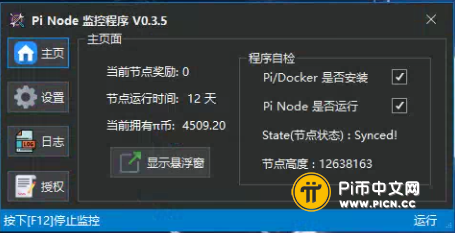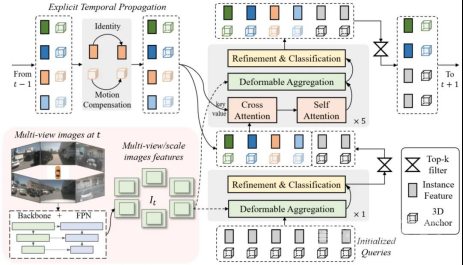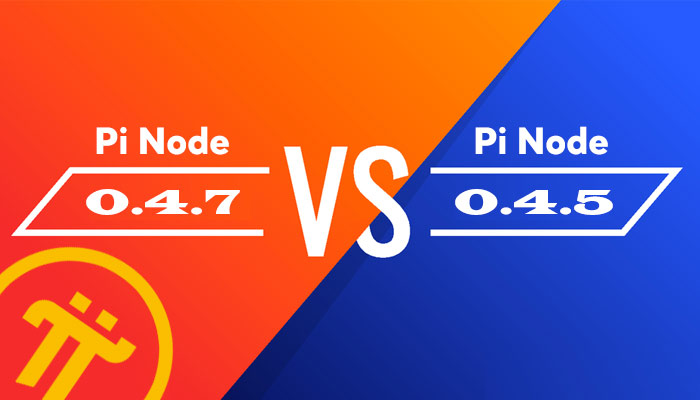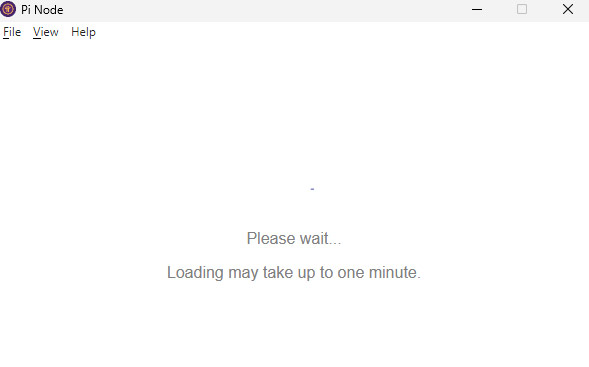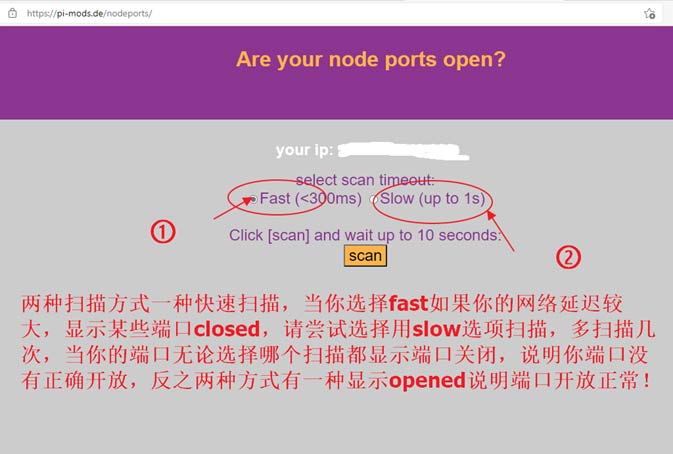根据 2021 年 12 月的饼图白皮书,我们解释了节点补偿公式。
这篇文章可能是错误的,因为我的个人观点。
?️节点补偿公式
节点补偿公式如下所示:
N(I) = node_factor • tuning_factor • I
上述公式的定义如下:
▶Node_factor = Percent_uptime_last_1_days • (Uptime_factor + Port_open_factor + CPU_factor)
上面的公式定义如下:
▫️Uptime_factor = (Percent_uptime_last_90_days + 1.5*Percent_uptime_last_360_days(360-90) + 2* Percent_uptime_last_2_years + 3*Percent_uptime_last_10_years)
▫️Port_open_factor = 1 + percent_ports_open_last_90_days + 1.5*percent_ports_open_last_360_days + 2* percent_ports_open_last_2_years + 3*percent_ports_open_last_10_years
▫️CPU_factor = (1 + avg_CPU_count_last_90_days + 1.5*avg_CPU_count_last_360_days + 2* avg_CPU_count_last_2_years + 3*avg_CPU_count_last_10_years)/4
▶ Tuning_factor
节点补偿规范化(调整)到一定级别的值
▶ I
由于默认挖矿率(每月减少),最终节点奖金也会随着默认挖矿率的下降而逐渐减少。
从下面开始,让我们回顾一下白皮书。
The node reward depends on the uptime factor, port open factor, CPU factor, and the tuning factor.
节点补偿取决于正常运行时间系数、端口打开系数、CPU 系数和调优系数。
The uptime factor of a Node for a given period of time is the proportion of time the Node is active during that period.
节点在特定时间段内正常运行时间的系数是节点在该时间段内处于活动状态的时间的百分比。
For example, a 25% uptime factor yesterday means that the Node was live and accessible for a total of 6 out of 24 hours yesterday.
例如,如果昨天的正常运行时间百分比为 25%,则意味着节点在昨天的 24 小时内总共有 6 小时可以运行和访问。
The Pi Node software tracks the time a particular Node is active.
Pi 节点软件跟踪特定节点处于活动状态的时间。
Starting in the Open Network phase, only a Node running functionally at a given point in time is considered active.
在开放网络阶段,只有在某些时间点以功能方式运行的节点才被视为处于活动状态。
This is a proxy for the reliability of the Node.
这是节点可靠性的代理。
However, for the historical data relevant to the mining reward, a Node is considered active if the Node app is open and connected to the internet even if it is not running functionally.
但是,对于与挖掘补偿相关的历史数据,如果节点应用处于打开状态且已连接到 Internet,则即使节点未在功能上运行,节点也被视为已激活。
i️ 从上面的句子中,我们可以看到一个非常重要的事实:如果您有过去的节点操作数据,并且节点程序正在运行,则可以确定节点处于活动状态并运行,从而获得奖金。
但是,即使节点本身未运行,您也会看到奖金。我认为这些问题在未来的改进中可能会消失。
This exemption for the past performance recognizes that the Community Node operators running the "Testnet" provided the network with important data and infrastructure to enable multiple iterations of the Node software and "Testnet", and that it was not always the fault of the Node operator that their Nodes were inoperative.
这种对过去性能的豁免使运行“测试网”的社区节点操作员能够向网络提供关键数据和基础结构,以实现节点软件和“测试网”的多次迭代,并且节点操作员承认,他们的节点并不总是不工作。
The port open factor of a Node for a given period of time is the proportion of time the Node’s specific ports are detected to be accessible from the Internet during that period.
节点在特定时间段内的端口打开因子是在此期间检测到 Internet 上可以访问节点上的特定端口的时间百分比。
Pi Nodes use ports 31400 through 31409, enabling other nodes to reach them through these ports and the network IP address.
Pi 节点使用端口 31400 到 31409,允许其他节点通过这些端口和网络 IP 地址连接到端口。
An open-port Node is able to respond to communications initiated by other Nodes, while closed-port Nodes are not able to receive such communications from other Nodes and can only initiate communications.
开放端口节点可以响应由其他节点发起的通信,而封闭端口节点无法接收来自其他节点的通信,只能启动通信。
i️ 上一句是打开和运行端口的节点与不打开端口的节点之间的区别,以及是否可以与其他节点通信。通过查看下级句子,您可以大致了解发送和接收的信息。
Pi’s consensus protocol relies on Nodes sending a series of messages among each other.
派的共识协议依赖于节点之间发送一系列消息。
Therefore, open-port Nodes are critical to the operation of the Pi blockchain, and thus, worthy of a mining reward boost.
因此,开放端口节点对Pi区块链的运行至关重要,因此值得加强挖掘补偿。
i️ 上面的句子解释了为什么打开端口的节点会获得更多奖金。
In fact, the network aims to have at least 1/8th of the Nodes with open ports, and having an open port is one of the prerequisites for being a Super Node.
实际上,网络的目标是至少八分之一的节点具有开放端口,而拥有开放端口是成为超级节点的先决条件之一。
i️上面的句子表明,成为超级节点的先决条件是端口打开,这意味着并非所有节点都可以成为超级节点。
通过下面的网站,我们可以看到,目前大约有6,5464个节点在运行。如果其中 1/8 是超级节点,则大约 8,<> 个节点可能是超级节点。但是,由于我们可能会限制正式节点的数量,因此实际数量将一直观察到最后。
※不知道以下网站上的数据具有何种可靠性。估
计这是基于一位开发人员对节点程序进行不包分析的信息创建的。(不是先锋的官方网站)
https://dashboard.pi-blockchain.net/
The CPU factor of a Node for a given period of time is the average number of CPU cores/threads available on the computer during that period.
在特定时间段内,节点的 CPU 系数是计算机在该时间段内可以使用的平均 CPU 内核/线程数。
A higher CPU factor prepares the blockchain for future scalability, for example, the ability to process more transactions per block or more transactions per second.
CPU 系数越高,区块链为未来的可扩展性做好准备,例如每个块处理更多事务或每秒处理更多事务的能力。
The Pi blockchain is not an energy and resource-intensive blockchain.The network is initially set to operate at one new block of up to 1,000 transactions (T) about every 5 seconds.
派区块链不是能源和资源密集型区块链。网络最初设置为在一个新块中运行,大约每 5 秒最多有 1,000 个事务 (T)。
Thus the network is effectively capable of processing up to about 200 transactions per second (TPS) or ~17M T/day.
因此,网络每秒可以处理大约 200 个事务 (TPS),或者每天最多处理 17MT。
Should the blockchain get congested in the future, this limit can be increased to 2,000 TPS (~170M T/day) by increasing the block size from 1000 to 10,000 transactions per block.
如果区块链在未来失控,将块大小从每个块 1000 个增加到 10,000 个,则可以将此限制增加到 2000 TPS(~170MT/天)。
The higher the CPU contributed by Pi Nodes, the more room the network will have to grow and scale further in the future.
饼图节点贡献的 CPU 越高,网络在未来就越需要增长和扩展。
Furthermore, higher collective CPU from Pi Nodes will allow novel peer-to-peer node-based applications to be built on Pi Network, such as decentralized CPU sharing applications that let computing power-intensive applications run or provide distributed cloud services.
此外,Pi Nodes 的更高集合 CPU 允许在饼图网络中构建新的基于对等节点的应用程序,例如运行计算密集型应用程序或提供分布式云服务的分布式 CPU 共享应用程序。
i️ 我们认为,当打开我们在节点程序的 TroubleShooting 窗口中看到的 API 开关时,可以运行的上半部分可能是服务。
Such services will be further rewarding contributing nodes with additional Pi paid by the clients of those services.
这些服务将为贡献节点提供更多奖励,这些节点由这些服务的客户支付额外的 Pi。
i️这意味着,如果将来打开 API 服务并运行节点,则可能会有额外的节点补偿。
i️此 CPU 部分存在争议。处理速度快的现代CPU对节点有利,或者即使球形,核心数也更高。究竟哪个更有利,目前还不得而知。
当 CPU 具有 1 核快速处理速度和 5 核慢速 CPU 时,1 核可以一个处理 5 个,5 个核可以一次处理 5 个。哪个快呢?这个也不知道。需要权衡各种条件。
还有一件事,那么,节点分数会更高,因为处理速度更快吗?如果只查看节点公式,则可能并非如此。
这是因为节点补偿公式没有显示 CPU 的处理速度。
毕竟,由于没有确切的标准,很难确定哪个更有利。我认为,在同一环境中进行测试可以产生粗略的估计。自己做个研究 判断一下选择就可以了
a tuning factor normalizes the Node reward to a number between 0 and 10.This is meant to make Node rewards comparable to other types of mining rewards that recognize other contributions to Pi Network.
调优系数将节点补偿规范化为 0 和 10 之间的数字。这是为了使节点奖励与其他类型的采矿奖励进行比较,这些奖励承认对饼图网络的其他贡献。
i️ 由于上面的句子,一些人认为节点奖金在国外不超过10。如果周围没有十人以上的人,你可能会这样想。以后真的可以给10-0因为只要调整一下这个数字,就可以调整节点补偿。确切的是,它成为开放主网的时间点。
During the Enclosed Mainnet phase (as explained in the Roadmap section), the Node reward formula is expected to iterate.
在关闭主网阶段(如 Roadmap 部分所述),节点补偿公式预计将重复。
For example, the use of logarithmic or root functions may potentially obviate the need for a tuning factor.
例如,使用日志或根函数可能会消除对优化元素的需求。
当我重看白皮书时,我发现了一些关于为什么会这样的问题。
毕竟,在节点奖金中,重要的是持续时间。
运营时间超过 90 天时,“1 年、2 年和 10 年”运营期间将分别“+”计算奖金。
从一开始就以高规格开始,在端口打开的情况下运行,似乎会积累更高的分数。
但是,这是假设奖金是按照公式发放的。
从经验来看,节点奖金似乎没有按照官方方式出现。
祝大家以正式节点为目标运营。


